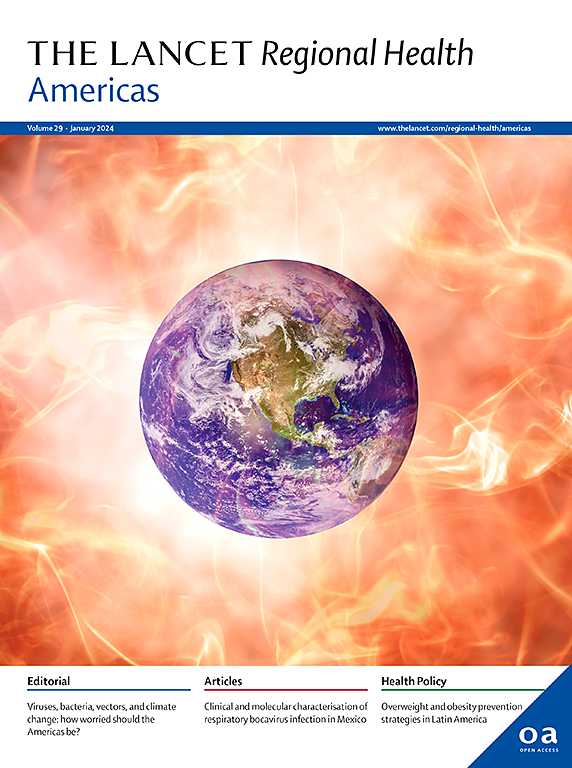Clinical effectiveness of HPV vaccine by age at vaccination: a matched case-control study
IF 7
Q1 HEALTH CARE SCIENCES & SERVICES
引用次数: 0
Abstract
Background
Important questions remain about the extent to which human papillomavirus (HPV) vaccines are realizing their full potential in real-world settings. This study aimed to assess how age at the time of vaccination influences its effectiveness against HPV-attributable high-grade cervical lesions (HGCL).
Methods
In this matched case-control study conducted in New Haven County, Connecticut, cases were vaccine-eligible women diagnosed with HGCL associated with HPV 16 or 18 from 1/1/2010 to 12/31/2019. Controls were women with normal Pap smear results, matched to cases by age, medical practice, and date of Pap test. Participants were interviewed and records were reviewed to ascertain vaccination history and possible confounders including sexual behaviors. Vaccine effectiveness (VE) by age at the time of vaccination was assessed using matched odds ratios (OR) and 95% confidence intervals (CI) derived from multivariable conditional logistic regression models. VE was calculated as (1 − OR) × 100%.
Findings
A total of 524 women (132 cases and 392 controls) were included. The adjusted VE of >1 dose of HPV vaccine was 54% (95% CI: 8–77%, p = 0·03). When the first dose was given at ≤18 years of age VE was 75% (95% CI: 13–93%, p = 0·03), and when vaccinated >18 years VE was 43% (95% CI: −22 to 74%, p = 0·15).
Interpretation
These data demonstrate that the full benefit of HPV vaccines may not be realized when administered at older ages. Continued and strengthened efforts should be made to ensure that recommendations for HPV vaccination of younger adolescents are followed.
Funding
National Institutes of Health, American Cancer Society, Robert E. Leet and Clara Guthrie Patterson Trust, and Centers for Disease Control and Prevention.
HPV疫苗接种年龄的临床有效性:一项匹配的病例对照研究
人类乳头瘤病毒(HPV)疫苗在现实世界中发挥其全部潜力的程度仍然存在重要问题。本研究旨在评估接种疫苗时的年龄如何影响其对hpv引起的高级别宫颈病变(HGCL)的有效性。方法在康涅狄格州纽黑文县进行的这项匹配病例对照研究中,病例是2010年1月1日至2019年12月31日期间诊断为HPV 16或18相关HGCL的符合疫苗条件的女性。对照组是宫颈抹片检查结果正常的妇女,与年龄、医疗实践和宫颈抹片检查日期相匹配。对参与者进行了访谈,并审查了记录,以确定疫苗接种史和可能的混杂因素,包括性行为。使用多变量条件logistic回归模型得出的匹配优势比(OR)和95%置信区间(CI)评估接种疫苗时年龄的疫苗有效性(VE)。VE计算为(1−OR) × 100%。结果共纳入524名妇女(132例和392例对照)。1剂HPV疫苗的校正VE为54% (95% CI: 8 ~ 77%, p = 0.03)。≤18岁首次接种时VE为75% (95% CI: 13-93%, p = 0.03), 18岁接种时VE为43% (95% CI: - 22 ~ 74%, p = 0.15)。解释:这些数据表明,当年龄较大时,HPV疫苗的全部益处可能无法实现。应继续加强努力,确保对青少年接种人乳头瘤病毒疫苗的建议得到遵守。资助美国国立卫生研究院,美国癌症协会,罗伯特·e·利特和克拉拉·格斯里·帕特森信托基金,以及疾病控制和预防中心。
本文章由计算机程序翻译,如有差异,请以英文原文为准。
求助全文
约1分钟内获得全文
求助全文
来源期刊

Lancet Regional Health-Americas
Multiple-
CiteScore
8.00
自引率
0.00%
发文量
0
期刊介绍:
The Lancet Regional Health – Americas, an open-access journal, contributes to The Lancet's global initiative by focusing on health-care quality and access in the Americas. It aims to advance clinical practice and health policy in the region, promoting better health outcomes. The journal publishes high-quality original research advocating change or shedding light on clinical practice and health policy. It welcomes submissions on various regional health topics, including infectious diseases, non-communicable diseases, child and adolescent health, maternal and reproductive health, emergency care, health policy, and health equity.
 求助内容:
求助内容: 应助结果提醒方式:
应助结果提醒方式:


